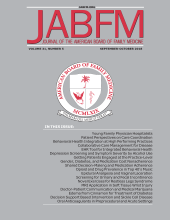Abstract
Objectives: Flexible sigmoidoscopy (flex sig) is an easily administered method of screening for colorectal polyps and cancer. In some patients, the depth of insertion is incomplete, which may result in missed polyps and cancers. To address the question of prospective patient selection for this procedure, we analyzed the factors affecting depth of insertion of sigmoidoscopies performed in outpatients over a 3-year period.
Study Design: The study involved retrospective chart review of procedures performed by one endoscopist over a 3-year period.
Outcomes Measured: Variables that might affect the extent of depth of insertion of the flexible sigmoidoscope.
Results: We developed separate logistic regression models of incomplete depth of insertion for women and men because sex was an effect modifier for many factors. For women, incomplete depth of insertion was related to inadequate preparation [odds ratio (OR) 3.59; 95% confidence interval (CI), 1.66 to 7.78]. Comparisons were made with the lowest risk group—women younger than 70 years with no hysterectomy. For women younger than 70 years, those with a hysterectomy were more likely to have an incomplete examination (OR 6.89; 95% CI, 2.68 to 17.73). For women 70 years and older, the odds ratio for women with a hysterectomy (OR 2.68; 95% CI, 0.96 to 7.46) was similar to that of women without a hysterectomy (OR 4.79; 95% CI, 2.27 to 10.12). For men, incomplete depth of insertion was related to age older than 75 years (OR 6.51; 95% CI, 1.72 to 30.40), history of abdominal surgery (OR 3.15; 95% CI, 0.95 to 10.41), and weight loss (OR 9.62; 95% CI, 1.98 to 46.67).
Conclusions: Our study showed a relationship between incomplete examination and increasing age, female sex (more than 75% of the incomplete examinations were in women), poor bowel preparation (in women), hysterectomy, abdominal surgery (in men) and weight loss (in men). Further research is necessary to determine whether a predictive model can be developed that would be useful to select patients most appropriate for flex sig. In those patients in whom difficulty is anticipated, the choice can be made in to perform flex sig under sedation, analgesia, with the help of distraction techniques, or offer primary colonoscopy.







